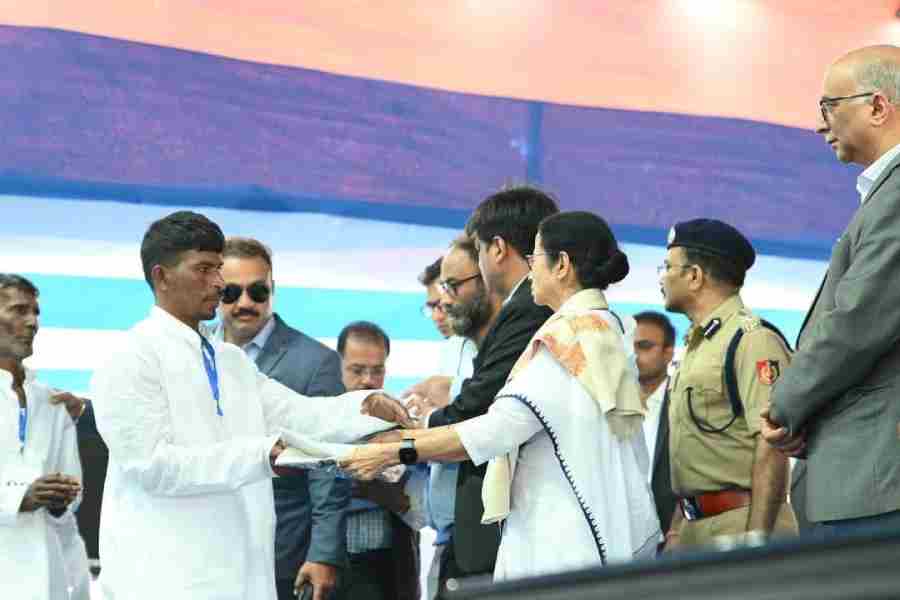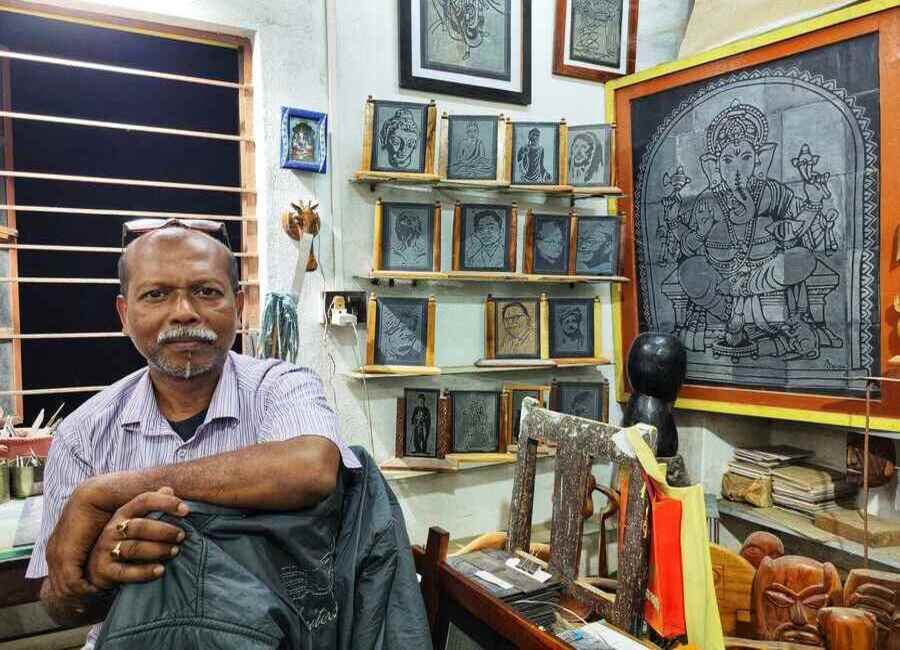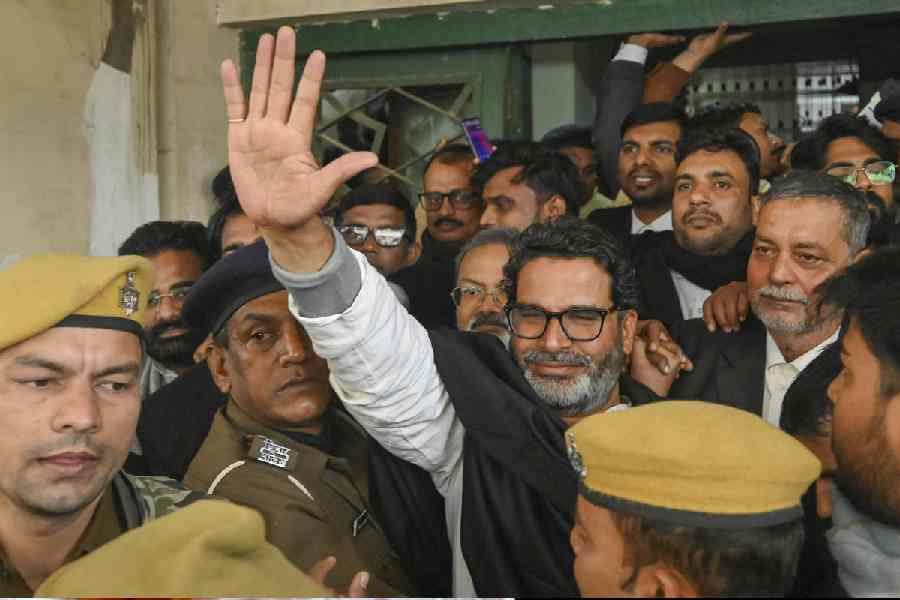 Tuesday, 07 January 2025
Tuesday, 07 January 2025
 Tuesday, 07 January 2025
Tuesday, 07 January 2025
He died months before his 33rd birthday but he lives on forever, his name synonymous with martial arts wherever you go across the world – from the favelas of Brazil to the high-mountain tea shops in the Himalayas.
Bruce Lee was born in San Francisco on November 27 in 1940 and breathed his last in Hong Kong on July 20 in 1973. And in that short span of time, he became a legend.
He would have been 84 this week.
On Bruce Lee’s 84th birth anniversary and the launch of the eighth season of the Bruce Lee Podcast, his daughter, Shannon Lee, speaks about her father in an email interview with The Telegraph Online.
Shannon, 55, has spent her life preserving her legendary father’s memory. She is CEO of the Bruce Lee Family Company, chair of the board for the Bruce Lee Foundation, executive producer for the Netflix series The Warrior and writer of books like Be Water, My Friend: The Teachings of Bruce Lee and Breath of the Dragon.
Bruce Lee disliked being called a ‘star’
When Bruce Lee started martial arts, he hardly knew he would become a movie star known for his athletic skills and philosophy. “Definitely, in the beginning, I had no intention or whatsoever that what I was practising and what I am still practising would lead to this,” Lee told Pierre Berton in 1971.
Shannon points out that her father “was a child actor and appeared in twenty or so films between the ages of 5 and 18”.
When Bruce Lee appeared on the The Pierre Berton Show in 1971, the host introduced the then 31-year-old as someone “on the verge of stardom in the United States” while “he’s just achieved super stardom as a film actor in Hong Kong”.
Bruce took exception to being called a superstar as Berton asked him if he would “live in both worlds – be a superstar here [Hong Kong] or [in] one of the states”.
Bruce Lee had said: “The word superstar really turns me off…because the word ‘star,’ man, it’s an illusion. It’s something the public calls you. You should look upon yourself as an actor. I mean you would be very pleased if somebody said, ‘Hey man, you are a super actor.’ It is much better than ‘superstar’.”
‘He was very comfortable in front of the camera’
Although he featured in 37 feature films and 20 television shows among other projects, only a handful of Bruce Lee’s movies are talked about.
“He was very comfortable in front of the camera. I do think that his acting is often overlooked,” says Shannon.
“That said, he was not the most subtle and nuanced of actors, but it didn’t matter. He was able to emote and communicate what was needed in a convincing and powerful way that made you believe his characters were authentic. His acting complemented his martial prowess perfectly.”
Asked about her personal favourite Bruce Lee movie, and Shannon says she has “gone back and forth between films as time passes and I change”.
“I love them all for different reasons. But, I have particularly enjoyed watching my father shine in Fist of Fury aka Chinese Connection, of late. He veritably glistens on screen.”
Why the nunchucks in ‘Fist of Fury’ matter
Bruce Lee turned the nunchucks, a martial arts weapon made up of two sticks and a chain, into one of his trademarks. In Fist of Fury, when Bruce – as Chen Zhen – is encircled by numerous Japanese martial artists, he uses the nunchucks to put his adversaries in a fix.
In "Burning Asia: Bruce Lee's Kinetic Narrative of Decolonization", author M.T. Kato mentions that Linda Lee, Shannon’s mother, felt Bruce Lee “saw the nunchaku as historically justified” for a patriotic film like Fist of Fury.
M.T. Kato wrote that when Lee’s Chen squares off against Suzuki, the villain, “the antagonism between Japanese imperialism and the Chinese people is articulated in a symbolic language of antinomy between nunchaku and katana”.
Bruce Lee ‘collected and admired all manner of weapons’
However, the nunchucks were not reserved for one particular film. They also appeared in The Way of the Dragon, Enter the Dragon and Game of Death.
“My father had a fondness for weapons generally,” says Shannon. “He collected and admired all manner of weapons, but nunchucks were a particular favorite for a variety of reasons.
“They are rather benign-looking to a degree but they require skill to use and they can be exceedingly effective while looking highly dynamic,” she adds.
“They make noise as they whir through the air; they put on an awe-inspiring show if wielded masterfully, and they have humble roots as an incognito farming tool. It is sort of the ultimate of dynamic simplicity.”
Bruce Lee ‘did not believe in competing in martial arts…’
Although he took part in a few fights and sparring matches, Bruce Lee did not like competing in martial arts tournaments.
He set up a school in Hollywood and taught martial arts to the actors Steve McQueen, James Garner, Lee Marvin and James Coburn.
When Pierre Berton asked Bruce Lee why McQueen and others wanted to learn Chinese martial arts from him, Lee said he helped them attain “self knowledge”. He said he taught them “the art of expressing the human body in the combative form”.
For Bruce Lee, martial arts was “honestly expressing yourself, ” which was “very difficult to do”. Lee told Berton that martial arts as a sport with rules and regulations put a limit on the expression of the human body.
“I think the ‘honest self expression’ is in the hands of the individual, whatever the forum,” says Shannon, who is also a spiritual educator.
“My father did not believe in competing in martial arts because competitions by their very nature put boundaries and limits around movement. And when one is competing, one is more focused on winning than being an active and creative artist,” she says.
“But that doesn’t mean that you can’t be. It just means that you have to be in deep contact with your soul as it meets the moment of your engagement. Not easy no matter the circumstances.”
The Way of the Dragon: Bruce Lee vs Chuck Norris
Despite the financial success of Fist of Fury, Linda Lee recalled in the documentary I am Bruce Lee that director Lo Wei “was old school” and would not listen to the ideas Bruce Lee had.
Looking for the creative freedom he wanted, Bruce moved on with producer Raymond Chow to make The Way of the Dragon.
As Linda Lee recalled: “He said to Raymond Chow, ‘I want to make this film - The Way of the Dragon. I want to write it, I want to produce it and I want to direct this. And I want to act in it.”
In the classic final fight scene of the movie, Bruce Lee squares off against Chuck Norris in Rome’s Colosseum. The choreography of the scene has become a classic.
In his book Beyond Bruce Lee, Paul Bowman notes that the choreography highlighted “broken rhythm” – something Bruce Lee opted for as a martial artist.
“I think it’s brilliantly choreographed to express so much more than just a fight between a protagonist and an antagonist,” Shannon says.
In the documentary I am Bruce Lee, director and screenwriter Reginald Hudlin says: “When he fought Chuck Norris, Bruce Lee represented the entire third world. He represented all people of colour, fighting the western oppressor.”
Asked about it, Shannon says: “I think it speaks volumes without saying a word. I think my father was brilliant in this way.”
Enter the Dragon, the most famous Bruce Lee film
In 1973, alongside John Saxon and Jim Kelly, Bruce Lee starred in Enter the Dragon. Directed by Robert Clouse, the film was distributed by Golden Harvest and Warner Brothers. Just six days prior to the movie’s release in Hong Kong on July 26, 1973, Bruce Lee passed away.
In the US, the movie was released on August 19, 1973.
Enter the Dragon, the most famous Bruce Lee movie, made $400 million at the box office at that time. “I think before my father came along and made the Hollywood co-pro of Enter the Dragon, action in Hollywood was very different. Nowadays every action star is a martial artist and they forever will be,” Shannon says.
Several filmmakers since then have doffed their cinematic hat to Bruce Lee’s legacy.
In John Wick Chapter 2, Keanu Reeves fights Ruby Rose inside a hall of mirrors like Lee fought Shin Kien in Enter the Dragon. In John Wick Chapter 4, Reeves uses the nunchucks against the force sent by The High Table.
“I am always tickled when there is a nod to my father in an action film,” Shannon says. “It speaks to his influence and the excitement that he communicated through his signature movements.”
Is Bruce Lee the father of mixed martial arts?
In the documentary I am Bruce Lee, mixed martial artist Stephen Bonnar recognises a fighting move that Bruce Lee attempts on Chuck Norris in The Way of the Dragon.
“Chuck got chucked out right there. Boom, guillotine choke [a chokehold] in the ’70s! That’s being ahead of your time” Bonnar says in the documentary.
Enter the Dragon opens with a sparring match where Bruce Lee is wearing a type of gloves similar to the ones worn by contemporary mixed martial artists. He is also striking as well as grappling.
Dana White, president of Ultimate Fighting Championship, called Bruce Lee the “father of mixed martial arts”.
On this, Shannon Lee says: “There were certainly other people mixing and combining arts before and after my father, but he was the first to talk about it and demonstrate it on a world stage, thereby drawing attention to his own art of jeet kune do and his beliefs about unarmed combat."
“And because (again) of his global popularity and impact, he sparked a fascination with martial arts and was therefore heard and seen in a way that other martial artists had not been previously,” she adds.
“He was a force of nature, an unstoppable force if you will. And his will was made evident,” Shannon Lee says.
Yip Man, Wing Chun, and Bruce Lee’s legacy
In the early days, under master Yip Man, Bruce Lee learned wing chun, a form of martial arts. Donnie Yen’s famous Ip Man franchise is based on the same master Bruce Lee trained with. In Ip Man 2, a kid visits the master to “learn kung fu”. He introduces himself as Bruce Lee.
According to Linda Lee, Yip Man had a “great influence on Bruce”. Biographer Paul Bowman, however, felt “Yip Man would not be a legend without Bruce Lee” as “wing chun was a very very minor martial arts style,” which became “global” “all because of him [Lee]”.
“I do believe that my father’s global impact was helpful in shining a light on wing chun and Yip Man. But that doesn’t need to take anything away from Yip Man who was a formidable and wise master of his own accord,” Shannon Lee says.
“It’s just rather that more people got the opportunity to know about him and the art of wing chun, than might have otherwise, because of my father’s fame and legacy, which is a wonderful circumstance,” she adds.
‘Be water, my friend’: ‘Finding a way to support life’
In the first episode of the television series Longstreet, Bruce Lee instructs James Franciscus to “empty your mind” as he learns to kick.
On Pierre Berton’s request, Bruce Lee iterated the philosophy on which he founded jeet kune do, a form of martial arts. “Empty your mind. Be formless, shapeless like water. Now, you put water into a cup, it becomes the cup. You put water into a bottle, it becomes the bottle…Now water can flow or it can crash. Be water, my friend,” said Bruce Lee.
When reminded of this philosophy Shannon Lee said: “Well, I wrote a whole book about it so I would say that I think it is very valuable and timeless. I think that if we were to truly embody the idea of being like water, we would find ourselves living less in polarity and more in congruence with one another and the earth because more than just being about adaptability, it is about being formless, natural, and free.”
“It is about finding a way to support life - our own and others as we live and flow on,” added the author of Be Water, My Friend: The Teachings of Bruce Lee.
The Bruce Lee Podcast: ‘The best teacher is…’
Ahead of the beloved martial artist and actor’s 84th birth anniversary, the Bruce Lee Family Company launched the eighth season of the Bruce Lee Podcast. It is hosted by Shannon Lee, who is also the executive producer of the Emmy-nominated Warrior TV series.
“I like to think of the podcast as a growing and evolving conversation and format that engages people to share what they’ve learned as they have navigated their lives. We can see ourselves and our humanity reflected back to us in the experiences of others and perhaps in that process, we understand ourselves a little bit better,” Shannon says.
“The best teacher is life and the lives we live. My father said that if a person can reflect honestly about themselves, then they have the ability to grow and evolve,” she adds.
Although Bruce Lee did not live long enough to see Enter the Dragon’s success, he became a global star after the movie's release. After Enter the Dragon, Game of Death came out in 1978 as a posthumous work. Bruce Lee could not complete the film.
In Paul Bowman’s words, despite the Hollywood industry being “resistant to the idea of an Asian leading actor”, Bruce Lee left his mark on the Hollywood Walk of Fame. He broke negative stereotypes about the Asian community in the west.
“I would describe him as a force of nature. He could feel his own energetic aliveness and he lived fully and purposefully,” Shannon Lee says.
“He wasn’t perfect but he believed in himself and he was dedicated to his own process.”







